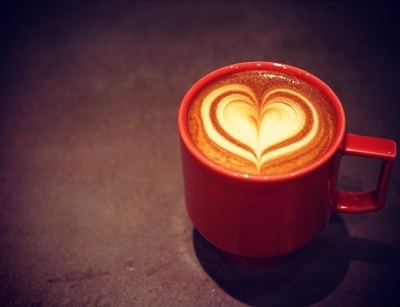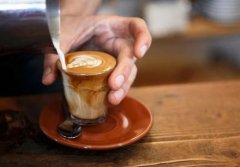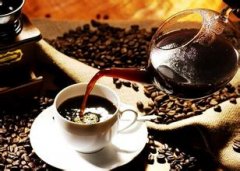Analysis on the production of Italian espresso based on the basic knowledge of coffee
Espresso training is believed to be the first step for many beginners to learn coffee making, but Espresso is also the key and foundation of learning. From the grinding → cloth powder → filling → extraction → taste, each step poured into every coffee student's painstaking efforts, but also condensed the experience and knowledge summarized by the predecessors.

A cup of Espresso, according to the SCAE guidelines, the liquid concentration of coffee-the total amount of dissolved solids, that is, what we often call "TDS (Total dissolved solids)" is 8% mur12%, concentration × coffee liquid milliliter = soluble substance is well known, the recommended dose of espresso is 25ml~35ml, then take a median value of 30ml, TDS value of 9.5% here (calculation begins!) 9.5% × 30mm 2.85 In other words, 2.85g of material in this cup of espresso is dissolved in the coffee. 2: soluble matter / weight of coffee powder = extraction rate here, we choose 18g of powder to make this cup of Espresso. 2.85g / 18g=0.15833 ≈ 15.8%.
Of course, we ignore the roasting degree of coffee beans, the distribution of coffee powder, and the grinding status of coffee powder, as well as the climatic environment, air humidity and so on when making coffee. At the same time, it is also assumed that the brewing pressure of the coffee machine is 9 bar atmospheric pressure, there will be countless factors affecting a cup of Espresso!
However, espresso runs through the whole sensory score and technical score in the World Barista Competition (World Barista Championship). According to the scoring standard of 2014, the score of espresso in the sensory score is as high as 56, accounting for about 33% of the total score. The other parts of the sensory score are divided into "cappuccino part 37 points", "creative coffee part 24 points", "personal performance part 13 points" and "overall impression part 24 points". All the coffee you show must be based on espresso, and in a normal competition, a good espresso almost determines the fate of the contestants!
Back to the point, I saw an article [AI' extracted by Espresso] S Rule Alti: sweet spot formula], which is mainly about how to extract the sweet spot (Sweet Spot) from a cup of coffee by adjusting the thickness of the grinding degree in the shortest time so as to control the time and the amount of extraction. This paper starts with a cup of Espresso obtained by extracting 30cc in 30 seconds (these two values depend on the baking degree, baking method, formula ratio, freshness of beans, etc.), and puts forward a formula [the amount of extraction is inversely proportional to the extraction time] and proposes that the extraction time should be reduced by 1 second for each increase of 5cc. On the contrary, add 1 second.
Coffee training here gives rise to another problem that we discussed earlier, TDS (Total dissolved solids). According to the AI formula, can we extract a cup of espresso that meets the TDS standard?
Or, according to the data given at the beginning of the article, is making an Espresso a good Espresso? Before answering all kinds of questions, I would like to recommend a fun extraction method to let you experience the extraction of a cup of espresso. Material dissolution: first of all, you prepare an electronic scale (for weighing coffee powder), a constant pressure powder hammer (used to reflect a fixed powder pressing strength), coffee beans with the same roasting degree and blending in the same batch (used to reflect the same test sample), a set of professional Italian coffee equipment (Italian coffee machine and bean grinder in accordance with WBC standards), clean rags, several 1oz glass cups (calibrated). Everything is ready, in fact, this method is very simple. When we determine the amount of powder used, we use a double-headed brewing handle to make two cups of espresso, and the one on the right allows it to extract normally. The focus is on the left!
Coffee training before the production of a graduated measuring cup, from the beginning of extraction, each extraction 10cc will be replaced by a measuring cup, until the completion of extraction, so that we have four drinks, one cup is fully extracted Espresso, and there are three cups of espresso separated into each 10cc, we can call it the front, middle and back stage, this method is called segmented extraction
This extraction method we will find a very interesting phenomenon, from the liquid color and consistency point of view: the front 10cc extraction liquid, the middle 10cc extraction liquid, the latter 10cc extraction liquid is not found to be any different?
Important Notice :
前街咖啡 FrontStreet Coffee has moved to new addredd:
FrontStreet Coffee Address: 315,Donghua East Road,GuangZhou
Tel:020 38364473
- Prev

Boutique coffee beans knowledge the most expensive coffee beans the most expensive coffee brand in the world
1: civet Coffee (KopiLuwak) Origin: Indonesia Islands Price: $160USD / lb civet is an omnivore that likes to eat coffee cherries. It chooses ripe, full and sweet coffee in the jungle, while civet coffee means that civet coffee is eaten by civets and digested by farmers.
- Next

Coffee common sense several points that should be paid attention to in making espresso Espresso
Making a good espresso can be a challenge for both coffee lovers at home and experienced baristas in the cafe. So to make a perfect espresso we should consider the following factors! [1] Bean requirements: no good coffee beans, no good espresso. Coffee beans must be fresh. Take espresso, for example.
Related
- Beginners will see the "Coffee pull flower" guide!
- What is the difference between ice blog purified milk and ordinary milk coffee?
- Why is the Philippines the largest producer of crops in Liberia?
- For coffee extraction, should the fine powder be retained?
- How does extracted espresso fill pressed powder? How much strength does it take to press the powder?
- How to make jasmine cold extract coffee? Is the jasmine + latte good?
- Will this little toy really make the coffee taste better? How does Lily Drip affect coffee extraction?
- Will the action of slapping the filter cup also affect coffee extraction?
- What's the difference between powder-to-water ratio and powder-to-liquid ratio?
- What is the Ethiopian local species? What does it have to do with Heirloom native species?

